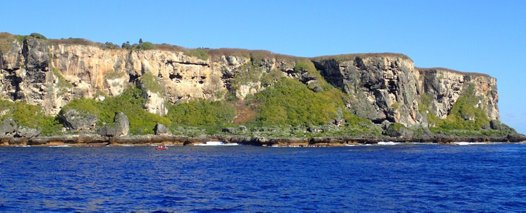From somewhere in the Pacific

© Australian Museum
From humpback whales, to spectacular nudibranches and a bizarre sponge crab, the AM team updates us from the southwest Pacific expedition.

© Australian Museum
We are excited to report that we are now one week into the Southwest Pacific Expedition aboard the Braveheart. Four intrepid Australian Museum staff: the fish team (Mark McGrouther and Sally Reader) and the marine invertebrate team (Mandy Reid and Elena Kupriyanova) joined kiwi colleagues from the Auckland and Te Papa museums and set off from Noumea towards Suva. Along the way, we will be sampling the marine animals living around a number of remote, uninhabited islands.
Our first stop was the waters of the amazing vertical-cliffed Walpole Island where we were delighted to share a sheltered bay with a mother and young humpback whale. Both teams had great success hand-collecting specimens on scuba for the Australian Museum's research collections. Some of the highlights were beautiful nudibranchs, colourful wrasses and a bizarre sponge crab collected in a baited trap.

© Australian Museum
We are incredibly lucky - the seas are calm and the weather is perfect. Having suffered through rough seas on former expeditions, we know how important the conditions can be. It's 10:30pm now and we are steaming towards Matthew Island, where sulphur-scented bubbles percolate up through the bottom, which should make for some interesting diving.
Stay tuned ...
— the Australian Museum team.
Check out the latest updates from our Expedition partners at Auckland Museum here.

